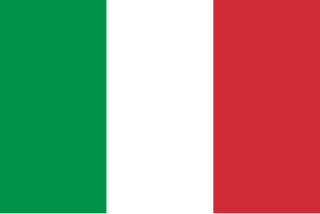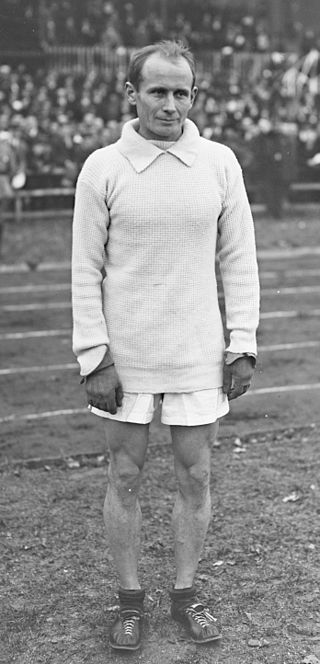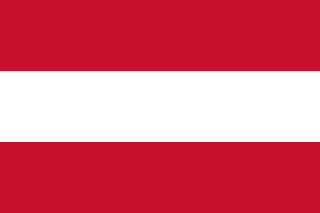
Cross country running is a sport in which teams and individuals run a race on open-air courses over natural terrain such as dirt or grass. The course, typically 3–12 kilometres (1.9–7.5 mi) long, may include surfaces of grass and earth, pass through woodlands and open country, and include hills, flat ground and sometimes gravel road and minor obstacles. It is both an individual and a team sport; runners are judged on individual times and teams by a points-scoring method. Both men and women of all ages compete in cross country, which usually takes place during autumn and winter, and can include weather conditions of rain, sleet, snow or hail, and a wide range of temperatures.

Archery had its debut at the 1900 Summer Olympics and has been contested in 18 Olympiads. 105 nations have competed in the Olympic archery events, with France appearing the most often at 15 times. The most noticeable trend has been the excellence of South Korean archers, who have won 32 out of 44 gold medals in archery events since 1984. Olympic archery is governed by the World Archery Federation. Recurve archery is the only discipline of archery featured at the Olympic Games. Archery is also an event at the Summer Paralympics.

Athletics has been contested at every Summer Olympics since the birth of the modern Olympic movement at the 1896 Summer Olympics. The athletics program traces its earliest roots to events used in the ancient Greek Olympics. The modern program includes track and field events, road running events, and race walking events. Cross country running was also on the program in earlier editions but it was dropped after the 1924 Summer Olympics.

Italy has sent athletes to most of the modern Olympic Games held since 1896, outside of not having officially participated in the 1904 Summer Olympics.
World Athletics Cross Country Championships is the most important competition in international cross country running. Formerly held annually and organised by World Athletics, it was inaugurated in 1973, when it replaced the International Cross Country Championships. It was an annual competition until 2011, when World Athletics changed it to a biennial event.

Sweden competed at the 1920 Summer Olympics in Antwerp, Belgium. 260 competitors, 247 men and 13 women, took part in 100 events in 18 sports.

The United States competed at the 1920 Summer Olympics in Antwerp, Belgium. 288 competitors, 274 men and 14 women, took part in 113 events in 18 sports.

Finland competed at the 1920 Summer Olympics in Antwerp, Belgium for the first time as a fully independent state. It competed independently in 1908 and 1912 as the autonomous Grand Duchy of Finland within the Russian Empire. 63 competitors, 62 men and 1 woman, took part in 51 events in 9 sports.

Finland competed at the 1924 Summer Olympics in Paris, France. 121 competitors, all men, took part in 69 events in 12 sports.

The Netherlands competed at the 1920 Summer Olympics in Antwerp, Belgium. 130 competitors, 129 men and 1 woman, took part in 58 events in 15 sports.

Belgium was the host nation for the 1920 Summer Olympics in Antwerp. 336 competitors, 326 men and 10 women, took part in 121 events in 23 sports.
The men's team cross country was a track and field athletics event held as part of the Athletics at the 1912 Summer Olympics programme. It was the first appearance of the event. The competition was held on Monday, July 15, 1912.

The men's marathon event was part of the track and field athletics programme at the 1920 Summer Olympics. The distance of this race was 42.75 kilometres. The competition was held on Sunday, 22 August 1920. 48 runners from 17 nations competed. No nation had more than 4 runners, suggesting the limit had been reduced from the 12 maximum in force in 1908 and 1912. The event was won by Hannes Kolehmainen of Finland, the nation's first Olympic marathon medal and victory; Kolehmainen received his fourth gold medal, having won the 5000 metres, 10,000 metres, and individual cross country in 1912. Estonia and Italy also won their first marathon medals.
The men's individual cross country event was part of the track and field athletics programme at the 1920 Summer Olympics. It was the second appearance of this event. The competition was held on Monday, August 23, 1920. Forty-seven runners from 12 nations competed.
The men's team cross country event was part of the track and field athletics programme at the 1924 Summer Olympics. It was the third and last appearance of this event. The competition was held on Saturday, July 12, 1924.
The men's pommel horse competition was one of eight events for male competitors in artistic gymnastics at the 1992 Summer Olympics in Barcelona. The qualification and final rounds took place on 27 July, 29 July and 2 August at the Palau d'Esports de Barcelona. There were 93 competitors from 25 nations, with nations in the team event having 6 gymnasts while other nations could have up to 3 gymnasts. For the third consecutive Games, the pommel horse ended in a tie for the gold medal. Belarusian Vitaly Scherbo and North Korean Pae Gil-su shared the top place. It was North Korea's first medal in the event. Bronze went to Andreas Wecker of Germany.

Austria competed at the 2012 Summer Olympics in London, from 27 July to 12 August 2012. The nation has competed at every edition of Summer Olympic Games, except the 1920 Summer Olympics in Antwerp. The Österreichisches Olympisches Comité sent a total of 70 athletes to the Games, 39 men and 31 women, to compete in 17 sports. This was approximately the same size as the previous Games, with the difference of one male athlete, the addition of one female athlete and three sporting events participated in. There was only a single competitor in eventing, fencing, rhythmic gymnastics, modern pentathlon, and Greco-Roman wrestling.

The individual eventing event at the 2020 Summer Olympics is scheduled to take place from 30 July to 2 August 2021 at the Baji Koen and Sea Forest Cross-Country Course. Like all other equestrian events, the eventing competition is open-gender, with both male and female athletes competing in the same division. 65 riders from 29 nations are expected to compete.

The team eventing event at the 2020 Summer Olympics is scheduled to take place from 30 July to 2 August 2021 at the Baji Koen and Sea Forest Cross-Country Course. Like all other equestrian events, the eventing competition is open-gender, with both male and female athletes competing in the same division. 45 riders from 15 nations are expected to compete.
The team eventing in equestrian at the 1936 Olympic Games in Berlin was held on the May Field, in Döberitz, and at the Olympiastadion from 13 to 16 August. Scores from individual competitions were used to determine team results. Any nation with three individual horse and rider pairs was entered as a team, with team score being the sum of the three individual scores. All three pairs had to finish the event for the team to receive a place, however; this eliminated 10 out of the 14 teams.











